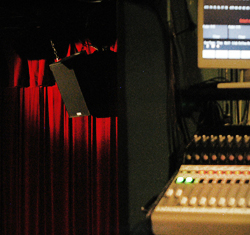
Fitting a single-repeat echo on the worship leader’s part in just a couple parts of the song, or even just a couple of words in the song, works incredibly well if it’s placed right in the same tempo as the song.
The only way that the sound mixer is going to know that those parts exist, understand how those refinements can and should fit in his mix, and be prepared to pull off whatever is necessary to make it work each time the song is played, is through careful listening and time – lots of it.
There have been many times when the players and singers decide they’re confident that they know the song and move on to the next, or decide to take a break, and I’m left there hanging, only partly done creating the sound that I was going for. Understand that this is a two way street.
I can’t expect someone playing an electronic keyboard, for example, to play for me so I can work with the front of house sound, without them being able to hear some of that keyboard sound in the monitors. Yet I can’t properly set the gain structure for that instrument without having them play the instrument.
A question I often get asked is which do I set first – the front of house mix or the monitor mix? And the answer, of course, is both. The problem is when the player expects the sound of the keyboard to be perfect in level and sound character from the first note. Perhaps shock therapy would work in these cases!
Building The Mix
If the worship music style includes a rhythm section or a number of instruments, then the soundcheck allows the mixer to start building the mix. Each sound tech may use a different approach to building the mix. Personally, I like to build in blocks, working with one input at a time.
In other words, I’ll start with the kick drum, then the snare, check to see how they work together, then add the rack toms and floor tom, then finally include the hi-hat and cymbals. Then I’ll work with the bass guitar sound, check it with the kick and snare, and then check how the bass guitar and the full drum kit fit together.
Once I’m confident that I have a solid foundation upon which to build the mix, then I’ll move to the keys, guitars, other instruments, then backing vocals and finally the worship leader. My process can frustrate a worship team that wants to hear something consistent on stage during the soundcheck because I’m frequently pulling things up and down in the front of house mix as I work my way through it.
While this doesn’t affect their monitor mix, they can certainly hear the front of house changes from their location on stage, and those changes can be disconcerting.
